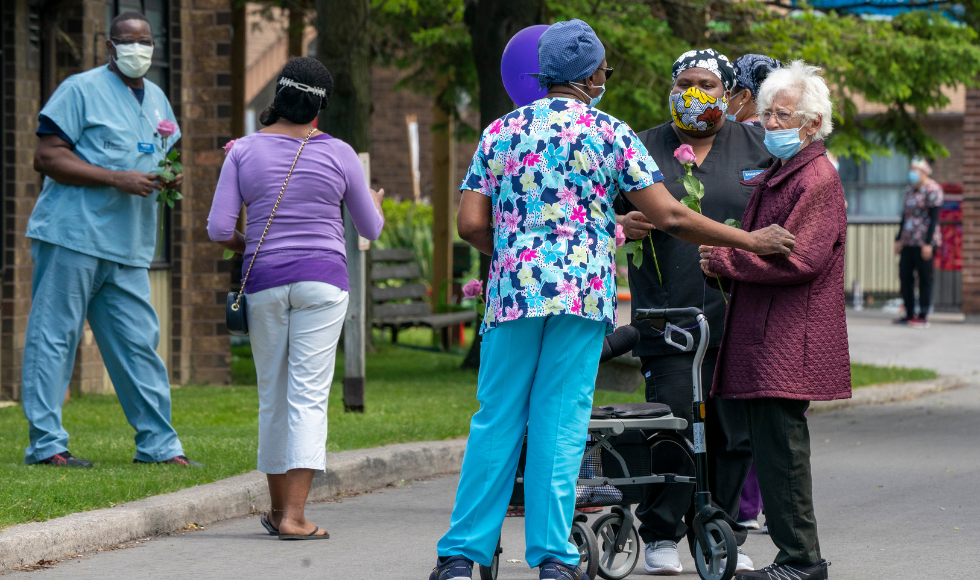Analysis: More long-term care beds in Ontario won’t help without well-paid, well-trained staff

BY ANDREW COSTA
MAY 30, 2022
Days away from the Ontario election, with health care a top issue, what are the three major parties’ proposals for fixing Ontario’s chronic long-term care problems?
The governing Conservatives are planning to open 30,000 more beds and upgrade existing facilities.
The Liberals plan to end for-profit long-term care and increase the proportion of at-home care, increasing spending by 10 per cent annually.
The New Democrats would add long-term care spaces, help seniors live at home longer and upgrade the pay of the personal support workers who provide most of the physical care in nursing homes and home-care settings.
I wouldn’t believe any of their promises.
Their plans gloss over what is really going on — we haven’t been training nearly enough health-care workers necessary to care for our elderly. The promised new beds and money for services require people to actually work at long-term care facilities and provide care, which we don’t have.
Let’s not blame the politicians completely though. All of this was predicted years ago, yet it took a pandemic for many of us to wake up to the reality. Our elder-care system is in trouble and Ontario’s fastest growing demographic faces a grim future. Many of us may shortly find ourselves or our loved ones without care.
COVID-19 devastation
We were all saddened, often angered, by what we saw happening in Ontario’s long-term care homes in the early months of the pandemic. COVID-19 swept into facilities filled with vulnerable residents but severely lacking in well-trained, adequately paid, experienced professional care workers.
The results were tragic — many COVID-19 deaths in Ontario occurred in long-term care homes while many more residents were sickened, forced into quarantine and separated from their families.
The pandemic exposed problems that had long festered. Many of them boiled down to not having enough staff, or staff who weren’t trained sufficiently and who lacked experience. That’s because there is simply not enough money being spent on people to look after us as we age.
Many of us, at some point, will cease to be able to live independently. Research suggests we’ll likely need care in a residential home or, if fortunate, in our own home. Many of us will be dependent on others at some point … but who will we depend on?
Long-term care is, at its root, straightforward. Vulnerable people, many of them older, need skilled, trustworthy caregivers to help them move around, bathe and dress.
While technology and automation have made many other sectors much more efficient, their use is naturally limited in long-term care or home-based care, since almost all the work is one-to-one skilled personal care. Health care, consequently, requires paying people to help other people.
The backbone of elder care
Whether care happens at home or in a facility, most care is provided by personal support workers, who are the unregulated backbone of elder care. Their jobs are stressful and laborious, and they don’t get paid enough. As a result, there is high staff turnover, which makes it difficult to develop an experienced, professional and committed workforce.
Important care is also provided by nurses, therapists, physicians and others who are also not incentivized to care for our elders.
More beds will not help unless those beds come with real staff. This has been made plain during the pandemic, when anecdotal reports circulate that much of the COVID-19 emergency care funds were returned because there wasn’t enough staff available to pay to expand care.
The number of personal care workers, nurses and others has declined per capita in Canada, and is well below comparable countries.
It’s no surprise that burnout among care workers is at an all-time high, and many are working reduced hours or leaving health care altogether. It’s also no surprise that as society ages, so do care workers, compounding the issue.
What Ontario most needs is far more people caring for our elders and other vulnerable populations, and for those caregivers to be better trained and better paid.
So when political candidates talk about their long-term care proposals, let’s remember there isn’t much point unless we train and adequately compensate enough workers to care for our loved ones.![]()
Andrew Costa, Associate Professor | Schlegel Chair in Clinical Epidemiology & Aging, McMaster University. This article is republished from The Conversation under a Creative Commons licence. Read the original article.
MILO